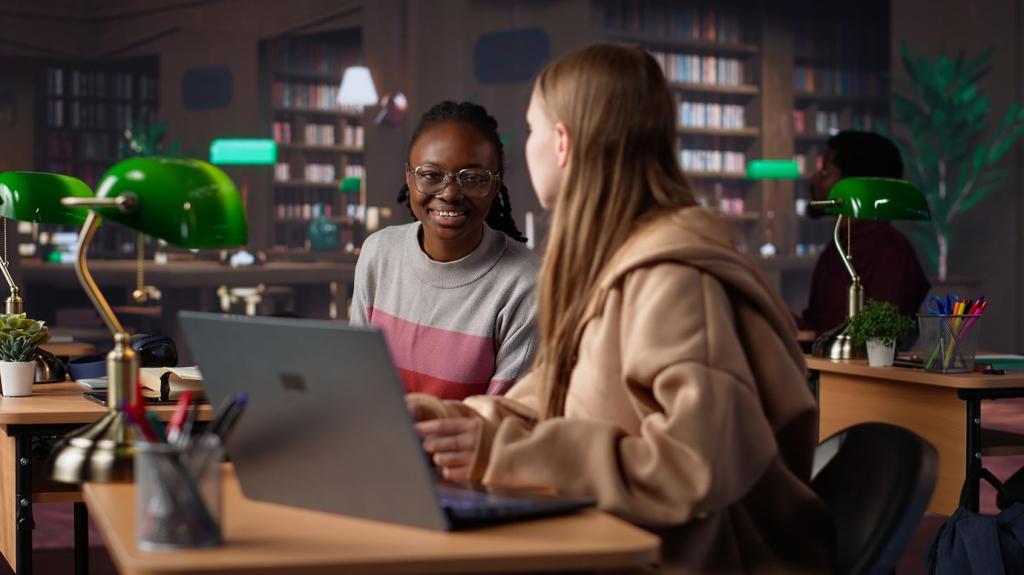Innovative Technologies Transforming Private Tutoring
Chosen theme: Innovative Technologies Transforming Private Tutoring. Step into a new era where human empathy meets intelligent tools, turning one-to-one lessons into personalized, data-rich, and joyful learning journeys that grow with every session.

AI Copilots and Adaptive Pathways
From Placement to Precision
Adaptive diagnostics now move beyond a single entry test, mapping strengths and gaps across micro-skills. One ninth-grader improved reading fluency after an AI engine blended decodable texts with targeted vocabulary bursts and spaced review.
Human in the Loop
Great tutors use AI as a creative partner, not an autopilot. They prompt models to draft practice, then refine tone, difficulty, and cultural relevance, ensuring materials respect context and the student’s lived experiences.
Time Freed for Teaching
Scheduling, lesson notes, and progress summaries once stole hours. Automation now drafts agendas and exit tickets, while tutors focus on coaching mindsets, celebrating small wins, and connecting with families about next steps.
Data-Driven Personalization That Feels Personal
Modern dashboards surface micro-trends: precision on fractions improved right after concrete manipulatives, but dipped with word problems. Tutors can nudge practice, then invite students to reflect on what strategies actually helped.
Data-Driven Personalization That Feels Personal
Short, embedded checks make progress visible without test-day anxiety. One college applicant used weekly two-minute writing snapshots; charting sentence variety and clarity built confidence before personal statement deadlines.


Concepts You Can Touch
A geometry student manipulates 3D solids on a phone, watching cross-sections change as shapes rotate. The tactile experience turns surface area from a formula to a physical intuition they will never forget.
Virtual Field Trips at the Kitchen Table
From exploring coral reefs to walking ancient streets, VR sparks curiosity and deeper inquiry. Tutors guide observation, pause for questions, and assign reflection prompts students can post and discuss together.
Accessibility and Inclusion First
Adjustable contrast, captions, and motion controls matter. Tutors should survey comfort levels, set session limits, and invite feedback about what feels engaging versus overwhelming, ensuring immersive tools support every learner.
Gamification and Microlearning That Sustain Motivation
Points for perseverance, not just perfection, shift focus to growth. A middle-schooler kept a fourteen-day practice streak by earning badges for reviewing mistakes thoughtfully instead of rushing through new content.

Real-Time Collaboration and Feedback Loops
Live canvases capture sketches, sticky notes, and solution paths. The replay feature lets learners revisit the exact moment insight clicked, strengthening independent study habits between tutoring sessions.
Short audio feedback beats long emails. A sixty-second note can validate effort, model thinking, and assign one actionable next step. Students can reply with questions, keeping momentum alive.
Transparent updates reduce stress and guesswork. Tutors share goals, progress snapshots, and upcoming targets while honoring privacy preferences. Parents can celebrate milestones and comment with supportive notes.




What’s Next: Wearables, Multimodal AI, and Community
Lightweight wearables can surface attention dips or cognitive overload with consent. Tutors might schedule micro-breaks, then compare reflection notes to metrics, teaching learners to notice and manage energy.
What’s Next: Wearables, Multimodal AI, and Community
AI that sees, hears, and reads work-in-progress can suggest targeted hints at the right moment. Tutors remain interpreters and encouragers, deciding when to pause help so struggle stays productive.


